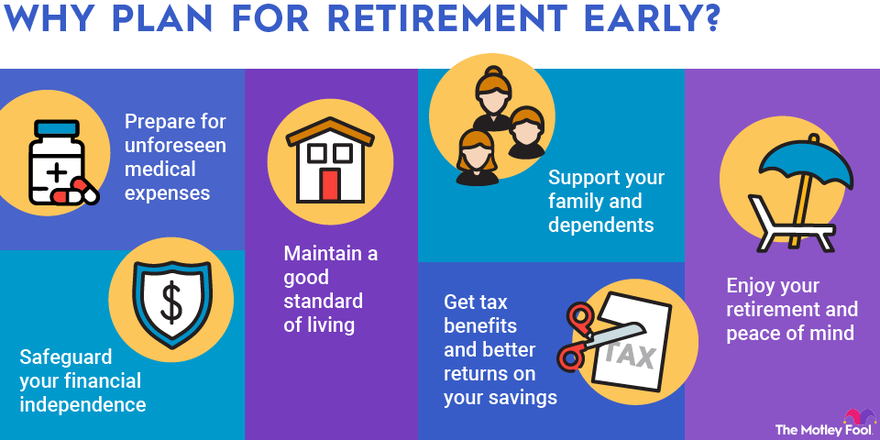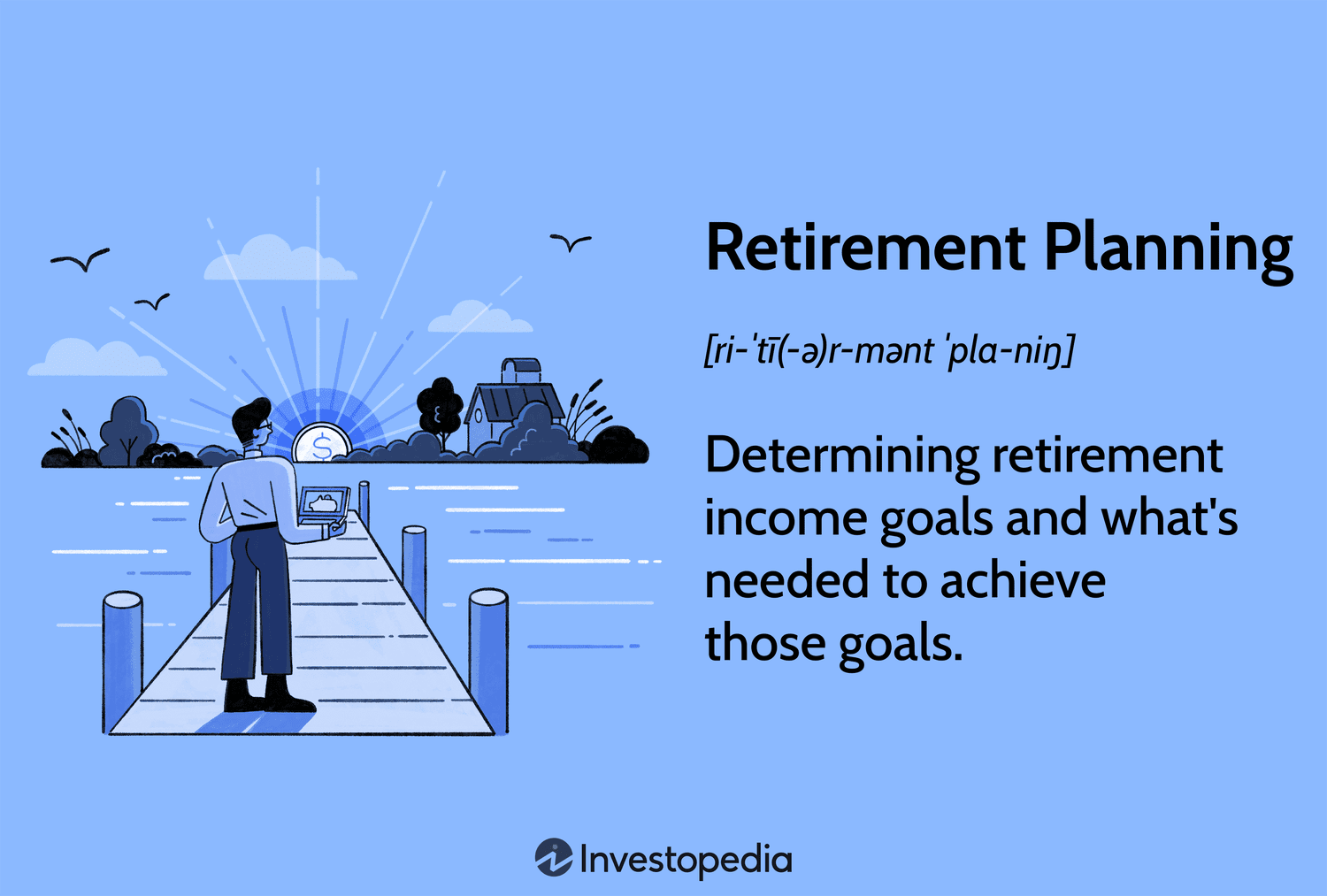Retirement Planning: Your Comprehensive Guide
Retirement planning is not just about saving money; it’s about ensuring a comfortable and secure financial future. As the saying goes, “failing to plan is planning to fail.” Understanding the fundamentals of retirement planning can help you create a roadmap to achieve your financial goals and enjoy your golden years without financial stress.
:max_bytes(150000):strip_icc()/retirement-planning.asp-FINAL-ed21279a08874c54a3a0f4858866e0b6.png)
Understanding Retirement Planning
What is Retirement Planning?
Retirement planning is the process of determining your retirement income goals and the actions you need to take to achieve those goals. It involves assessing your current financial situation, estimating future expenses, and developing a strategy to save and invest accordingly. The ultimate goal is to ensure that you have enough funds to maintain your desired lifestyle once you stop working.
Why is Retirement Planning Important?
- Increased Longevity: With advances in healthcare, people are living longer than ever. This means you need to plan for potentially decades of retirement.
- Rising Costs: The cost of living, healthcare, and inflation can erode your savings over time. Proper planning helps you stay ahead of these rising costs.
- Peace of Mind: Having a solid retirement plan provides peace of mind, allowing you to enjoy your life and spend time with family and friends without financial worries.
Setting Retirement Goals
Setting clear and achievable retirement goals is the cornerstone of effective planning. These goals should be specific, measurable, attainable, relevant, and time-bound (SMART).
Short-term vs. Long-term Goals
- Short-term Goals: These may include saving for a vacation, purchasing a second home, or funding your children’s education. These goals typically span 1-5 years.
- Long-term Goals: These involve accumulating enough savings to support your lifestyle during retirement, usually over a period of 20-30 years.
How to Set SMART Goals for Retirement
- Specific: Define exactly what you want to achieve. For example, “I want to save $500,000 for retirement by age 65.”
- Measurable: Identify how you will track your progress. Use tools like retirement calculators to see if you’re on track.
- Achievable: Ensure your goals are realistic based on your current financial situation.
- Relevant: Align your goals with your lifestyle preferences and retirement dreams.
- Time-bound: Set a deadline to create a sense of urgency and keep you accountable.
Assessing Your Financial Situation
Before diving into retirement savings options, it’s crucial to evaluate your current financial standing.
Calculating Your Retirement Needs
To estimate how much you need for retirement, consider the following factors:
- Current Expenses: What are your monthly expenses today?
- Lifestyle Changes: Will you travel more or spend less in retirement?
- Longevity: How long do you expect to live post-retirement?
- Inflation: Consider how inflation will impact your purchasing power over time.
Evaluating Current Assets and Income Sources
- List Your Assets: Include savings accounts, investments, real estate, and retirement accounts.
- Income Sources: Consider Social Security benefits, pensions, and any rental income.
- Net Worth Calculation: Subtract your liabilities (debt) from your assets to understand your financial standing.
Retirement Savings Options
Understanding the various retirement savings options can help you choose the right path for your financial future.
Employer-Sponsored Plans (401(k), 403(b))
Employer-sponsored plans are a great way to save for retirement, often featuring tax advantages and employer matching contributions.
- 401(k): Offered by private-sector employers, contributions are made pre-tax, lowering your taxable income.
- 403(b): Similar to a 401(k) but offered by non-profit organizations and educational institutions.
Individual Retirement Accounts (IRA)
An IRA is a personal savings plan that offers tax advantages for retirement savings.
- Traditional IRA: Contributions may be tax-deductible, and taxes are paid upon withdrawal in retirement.
- Roth IRA: Contributions are made after-tax, allowing for tax-free withdrawals in retirement, provided certain conditions are met.
Health Savings Accounts (HSA)
An HSA can help you save for medical expenses in retirement. Contributions are tax-deductible, and withdrawals for qualified medical expenses are tax-free.

Investment Strategies for Retirement
Investing is a critical component of retirement planning. A well-structured investment strategy can help grow your savings and combat inflation.
Diversifying Your Portfolio
Diversification reduces risk by spreading your investments across various asset classes, including stocks, bonds, and real estate. This strategy helps protect your portfolio from market volatility.
Asset Allocation by Age and Risk Tolerance
Your asset allocation should reflect your age and risk tolerance. Younger investors may opt for more aggressive portfolios with a higher percentage of stocks, while those closer to retirement may prefer conservative investments to preserve capital.
In this first half of our guide to retirement planning, we’ve covered the foundational aspects, including the importance of setting goals and assessing your financial situation. Stay tuned for the second half, where we’ll discuss managing debt, regularly reviewing your plan, and address common FAQs about retirement planning!
For more in-depth strategies on retirement planning, check out Investopedia’s Retirement Planning Resources.

Managing Debt for a Secure Retirement
Debt can significantly impact your retirement savings and financial stability. Therefore, managing debt effectively should be a critical part of your retirement planning.
Strategies to Reduce Debt
- Create a Budget: Identify your income and expenses to understand your financial situation better.
- Prioritize High-Interest Debt: Focus on paying off debts with the highest interest rates first, such as credit cards, to save money in the long run.
- Consider Debt Consolidation: This involves combining multiple debts into a single loan with a lower interest rate, making payments easier to manage.
- Seek Professional Help: If you’re overwhelmed, consider consulting with a financial advisor or credit counselor to explore debt management options.
The Impact of Debt on Retirement
Debt can diminish your retirement savings and limit your lifestyle choices in retirement. According to a report by the Federal Reserve, the percentage of older adults carrying debt has increased, leading to a greater need for planning around debt reduction.
Regularly Reviewing Your Retirement Plan
Retirement planning is not a one-time task. It requires regular reviews and adjustments based on life changes, market conditions, and personal goals.
Key Reasons to Review Your Retirement Plan
- Life Changes: Major life events, such as marriage, divorce, or job changes, can impact your financial situation.
- Market Performance: Economic shifts and market changes may require you to adjust your investment strategy.
- Inflation and Cost of Living: Keep an eye on how inflation affects your purchasing power and adjust your savings accordingly.
How to Conduct a Retirement Plan Review
- Set a Regular Schedule: Review your plan at least annually or bi-annually.
- Assess Progress: Compare your current savings against your goals and make necessary adjustments.
- Adjust Contributions: If you’re falling short of your goals, consider increasing your contributions to retirement accounts.

Frequently Asked Questions (FAQs)
How much should I save for retirement?
A common guideline is to save 15% of your gross income each year. However, this can vary based on your retirement goals, age, and current savings.
At what age should I start planning for retirement?
It’s never too early to start. Ideally, begin planning in your 20s or 30s. The earlier you start, the more you can take advantage of compound interest.
What is the difference between a 401(k) and an IRA?
A 401(k) is an employer-sponsored retirement plan, while an IRA (Individual Retirement Account) is a personal savings account. Both have different contribution limits and tax implications.
What if I have debt when I retire?
It’s advisable to minimize debt before retirement. If you have debt, create a strategy to pay it down as much as possible before you stop working.
Conclusion
Effective retirement planning involves setting clear goals, assessing your financial situation, managing debt, and regularly reviewing your plan. By taking a proactive approach, you can build a secure financial future that allows you to enjoy your retirement years without the burden of financial stress.
For more detailed insights on retirement planning, consider visiting Investopedia’s Retirement Planning resources.
Remember, successful retirement planning is about more than just accumulating wealth; it’s about ensuring you have the financial resources to live the life you want in your later years. Start today, and take control of your financial future!


